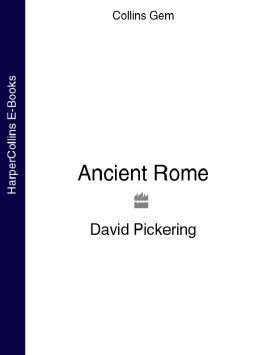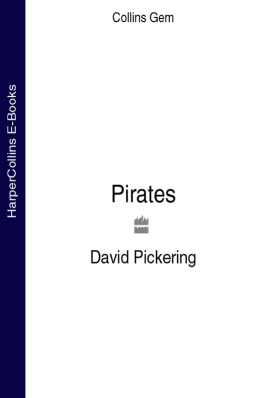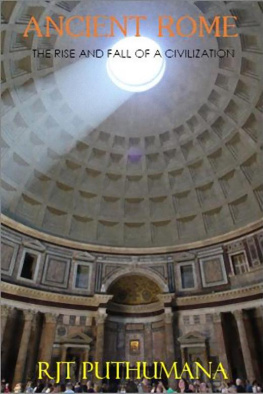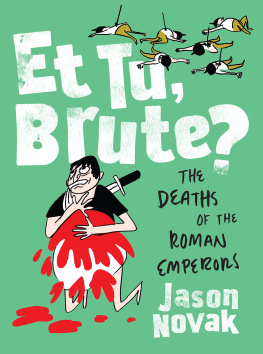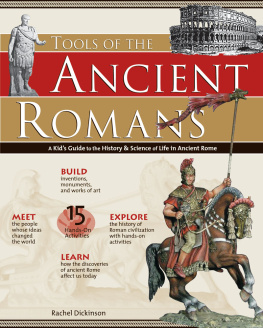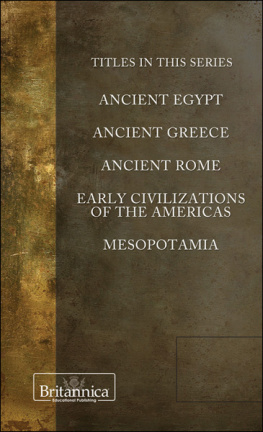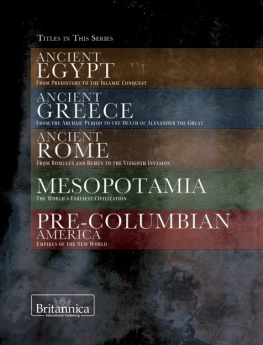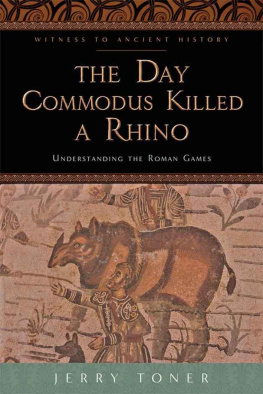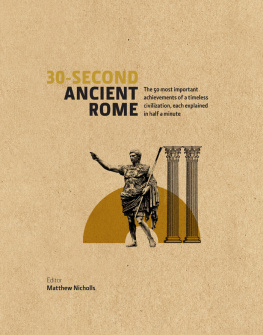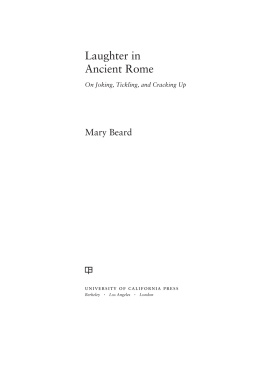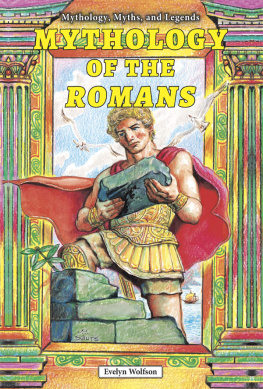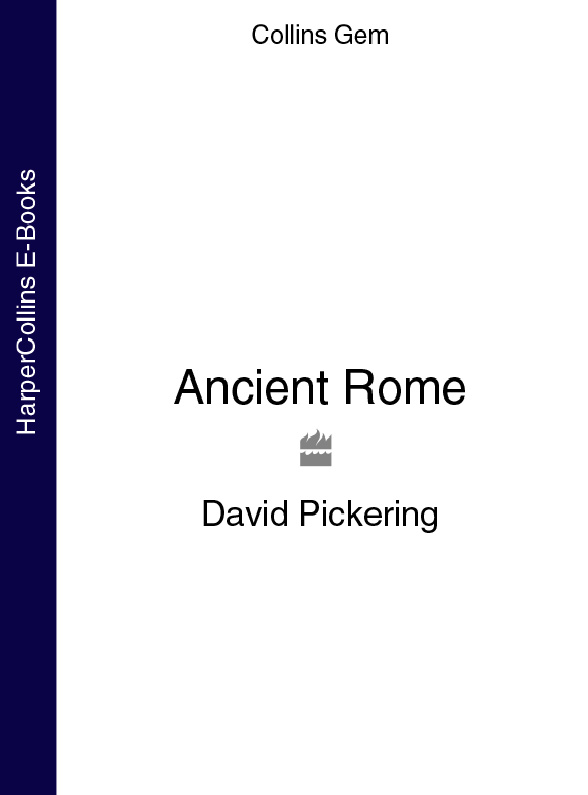The ancient Romans helped to shape the world as we know it today. The rise and ultimate fall of their civilization is central to the early history of Europe and the Mediterranean basin, and their cultural and political influence has been profound over succeeding centuries.
The Roman republic inherited and built upon the greatness of ancient Greece, absorbing Greek advances in fields ranging from philosophy and religion to science and the arts. The Roman empire, through its military occupation of much of western Europe, the Middle East and north Africa, ensured the communication of such ideas to the rest of the known world.
We tend to think of ancient Rome, with its formidable, disciplined army, as being fundamentally a military power. It is easy to forget that for many years Roman supremacy guaranteed peace (the Pax Romana) throughout the empire, enabling local economies to flourish as never before. Major new settlements, linked by excellent roads, sprang up throughout Roman-controlled territory, providing a template for future urban societies. Rome itself attracted huge numbers of foreigners, including brilliant craftsmen, teachers, traders and slaves, and was acknowledged as the wealthiest and most powerful city in the ancient world.
The influence of Rome spread as far as Spain in the west, Syria in the east, the Sahara in the south and Britain in the north. For 1000 years, Rome was the worlds leading power and its intellectual and commercial centre.
ROME AND THE MODERN WORLD
The Romans left behind many spectacular ruins, such as temples, amphitheatres, aqueducts and roads. Even more significant was their legacy of ideas. Among the innovations bequeathed by the Romans to later civilizations were not only their history and mythology but also the Roman alphabet and system of numerals, the Roman calendar, the use of concrete, glass windows and domes, central heating, a public health system, public baths, hospitals, a postal service, a fire brigade, a civil service, apartment blocks, international trade and the idea of empire. The Romans also had an enduring impact upon politics (many of their frontiers becoming the borders of modern states), law, religion (not least through the formation of the Roman Catholic Church) and language.
A united Europe
Many historians trace the modern ideal of a united Europe, with a shared government, linked economies and system of international law, back to ancient Rome.

Roman territory extended far beyond Rome itself, coming to include, in due course, the entire Italian peninsula, the coastline of the Mediterranean and most of what is now western Europe, as well as territories in northern Africa and the Middle East. Conquered lands were made Roman provinces, thus ensuring that the Roman way of life had a long-lasting and widespread influence.
View of Ancient Rome
For hundreds of years, Rome, to which all roads were said to lead, was the most magnificent city in the ancient world.
Italy itself has a varied landscape, ranging from fertile plains and marshes to the rocky mountainsides of the Apennines running down the central spine of the country. Some of the most fertile areas are located on the west coast, and it was here that the Roman civilization first emerged on the banks of the Tiber, which provided easy access to the coast, some twenty-five kilometres (six miles) downstream. Later Roman prosperity was to depend greatly upon Italys central position within the Mediterranean basin and trade routes with other peoples.
NEIGHBOURING PEOPLES
Early Roman expansion was at the expense of such neighbouring peoples as the Sabines and the Etruscans. This was a prolonged process, with Rome itself often falling victim to invasion by hostile tribes before Roman supremacy was eventually established throughout central Italy. Most of the kings of Rome, in fact, were of Sabine or Etruscan origin.
Romes contact with such neighbouring peoples, through trade and many other transactions as well as through warfare, was to play a crucial part in the early development of Roman culture.
The Roman world c. 200 BC

All of Italy was under Roman control by the middle of the third century (264 BC), after which Roman armies ventured further afield, seizing much of Hispania (modern Spain) from Romes rival Carthage and bringing Macedonia under its influence by 168 BC. In 133 BC, Pergamum became the first of Romes provinces in Asia. Gallia Narbonensis (southern Gaul) was made a Roman territory in 121 BC, while Cyrene in north Africa became the Roman province of Cyrenaica in 96 BC. The conquest of Bithynia, Pontus, Syria and Crete between 75 BC and 64 BC extended Romes possessions in the eastern Mediterranean.
EXPANSION
Julius Caesar had conquered the rest of Gaul by 49 BC and even ventured north into Britain, while Egypt was added by Octavian in 31 BC. Romes territories continued to grow after the foundation of the empire under Augustus, who put down rebellions and established Roman rule over all of mainland Europe west and south of the Rhine and Danube rivers. The Roman empire reached its further extent in the early years of the second century AD under the emperor Trajan, who successfully conquered Dacia (modern Romania) and large parts of the Middle East.
Frontiers
Roman influence was not confined to the borders of the empire. Roman troops often penetrated far beyond frontiers into lands held by hostile peoples in order to neutralize the threat of invasion, to support allies of Rome or to defend trading or other interests. The borders themselves were not necessarily strongly fortified. Hadrians Wall, with its mighty wall and linked forts, was the most heavily defended frontier, and the German frontier was similarly protected by a timber wall and forts, but elsewhere there were relatively light border fortifications, if any at all.
Disintegration of the empire
By now too large to be governed effectively, the empire slowly contracted after Trajans reign and was split into two with rival capitals in Rome and Constantinople and eventually disintegrated after repeated civil wars and barbarian invasions.
The empire revived
Memories of the empire were revived in the sixth century AD when Justinian, emperor of the eastern empire, reconquered much of Romes former territory around the Mediterranean and in southern Europe. However, the cost of running this rebuilt empire proved impossible to meet, and these regions soon returned to rule by barbarian kings.
The Roman empire


